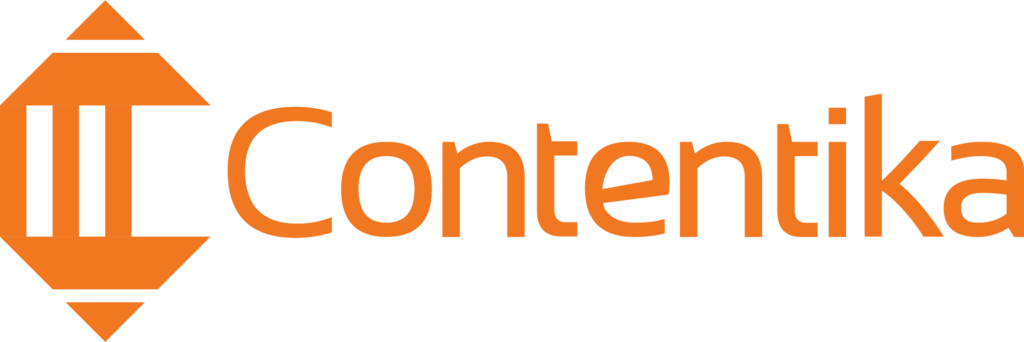Are you looking for tips and tricks to create an unforgettable pillar post? No matter what type of blog or website you are writing for, crafting the perfect pillar post is essential if you want readers to keep coming back.
In this blog article, we’ll discuss the elements that make up a great pillar post and provide some useful advice on how to write one effectively. Keep reading to find out more!
From choosing an eye-catching headline to making sure your content is easily digestible, there are several steps involved in creating a winning piece of content that will draw readers in and keep them engaged. Let’s dive into the anatomy of a perfect pillar post so you can start writing yours today!
What is a Pillar Post?
A Pillar Post is a comprehensive, in-depth blog post that serves as the backbone of your website’s content. It covers a particular topic or subject in great detail and is designed to be an evergreen resource, meaning readers should still find it useful and relevant years after its publication date.
Pillar posts are essential to any content strategy, and 82% of marketers actively used a content marketing strategy as of 2021. By providing in-depth, valuable content on the most important topics in your industry, you can establish your company as a thought leader.
These posts can be longer than traditional blog posts or articles, but if they offer 10 times the value of existing content, they’re worth the effort.
Keep your audience’s needs in mind when creating pillar posts, and you’ll be sure to engage and educate them.
Importance of Pillar and Cluster Pages
Matching User Search Intent
Pillar posts are designed to give searchers exactly what they need and in-depth answers to the questions they have. This is why pillar posts are one of the most effective content marketing tools available today. They not only provide key information but also anticipate a user’s next question, making them more likely to stay on your site longer.
As a result, you’ll increase conversions and get more customers who will buy from you and come back again. Plus, by targeting search intent in this way, you can even beat Google’s zero-click searches and make sure users click through to get their answers from your page on the SERPs.
Improving Backlinks
Pillar posts are an integral part of content marketing, and for good reason. Not only do they show your industry knowledge, but they also provide a great opportunity to create backlinks.
When you take a topic and give more than just the definition but delve deeper into how it affects people’s day-to-day lives and inspire them to look at it in new ways, you have yourself the perfect linkable resource.
For example, if you take a complex topic like AI technology, you could use your pillar post to explain how it affects everyday life, get people to question its impact on humanity, and provide thoughtful insights into what this means for the future.
This improves your backlink profile, which tells Google that your content is valuable and gives you Domain Authority. This increases your chances of showing up on page one of the SERPs or even in featured snippets.
All these help promote your pillar post content while establishing your company as an industry thought leader—perfect for any business. So, make sure you use your pillar posts wisely and take advantage of them as an effective content marketing tool.
Increase Lead Generation
Pillar posts also help you increase lead generation by staying relevant for longer periods of time. By creating content that is both timely and has long-lasting relevance, you can show your audience that you understand not just current trends but also the core building blocks of your industry.
For example, if you’re in the health industry, a trending post may discuss an emerging virus or new research on nutrition, while a pillar post may delve into topics like the anatomy of the human body or different types of diets. By combining short-term trends with well-crafted pillar posts, your audience will be more likely to trust and engage with your company.
Boost Traffic
Pillar posts have the potential to bring huge amounts of traffic to your site. Think about it if you create a comprehensive, highly optimized, well-written article on a specific topic, it’s likely to be one of the top results when someone searches for that particular keyword or phrase.
People are drawn to content that answers their questions and provides valuable insights, and pillar posts do just that. For example, imagine writing an in-depth guide about SEO techniques. If people search for “SEO techniques”, your pillar post is likely to be one of the top results listed, providing you with an influx of new visitors who may eventually become customers or clients.
Promotes Social Shares
Quality pillar posts also have the power to reach more people through social shares, organic backlinks, and word-of-mouth recommendations. After all, when someone likes what they read on your blog or website, they are likely to share it with their friends and colleagues.
This provides an invaluable opportunity to get your message out into the world in an authentic way while expanding your reach at the same time. When creating pillar posts, make sure that you focus on providing helpful information that is comprehensive yet easy to digest.
This will not only create value for readers, but it will also encourage them to become loyal followers and share your content with more people. By creating quality pillar posts, you can not only improve your SEO but also create an engaged community of followers that trust and value your brand.
Creates Structure
Creating a well-structured pillar post is not just about organizing your web page; it’s also about giving users an easy way to access the information they need. You can add value with pillar posts by breaking down complicated topics into manageable sections and giving helpful insights throughout.
For instance, if you’re writing a blog post on SEO optimization, you could break it into sections like “How to Optimize Your Website for Search Engines” and “Best Practices for SEO Content Writing” so that readers can easily find what they need.
This structure helps create an informative and user-friendly experience that increases reader engagement and reduces the bounce rate from your website.
Features of Pillar Blog Post
Extensive Detail
A pillar post is like a hub, providing comprehensive information on a specific topic. It should provide deep insight and knowledge into a subject and be presented in an easy-to-understand manner.
For example, if your blog focuses on business intelligence, you can turn it into a broad topic and write a pillar post that delves into the different types of data analysis techniques or explores how to develop meaningful insights from customer data.
The aim of such posts should be to give readers an in-depth understanding of the particular topic so that they can use it as a basis for further learning.
Lenght
The length of a pillar post should not be underestimated. Most blog posts are around 500–1000 words in length, but a pillar post should have a minimum of 1500–2500 words. If your usual blog post is 2,000 words long, then you can expect your pillar post to be two times as long—that’s 4,000 words!
Some pillar posts even look like small ebooks—the more robust and engaging the content is, the better it will do for SEO purposes. So if you want your content to really stand out from the rest and attract organic traffic, make sure it has enough ‘meat’ for readers to sink their teeth into.
Regular Revision
When creating a pillar blog post, it is important to ensure that your content reflects the current trends and developments in your industry. Regularly updating your post with fresh content ensures that your readers are kept abreast of the latest developments.
For example, if you are writing about SEO strategies for businesses, keep up to date with new algorithms or changes in best practices so that when a reader visits your post, they will know they are getting reliable information.
How To Create a Pillar Page/Pillar Blog Post
Writing a quality pillar post is no easy feat. It requires lots of research and thoughtful consideration to come up with a piece that will engage your readers, keep them captivated, and make sure they remember it long after they’ve finished reading.
The ideal blog post must have all the components in place in order to be successful; it must thoroughly discuss the subject, offer useful information, and provide simple examples that readers can understand.
1. Create a Topic
Choosing a topic is essential for any successful blog post. This can be determined by researching the conversations people are already having in their heads about the subject matter and figuring out what problems they are trying to solve or what questions they have about it.
For example, if you are writing a post about weight-loss, you might ask yourself what people who want to lose weight think and are searching for. Are they wondering if it is possible to lose weight? Does the prospect need to believe that it can be done even if they have failed in the past?
What questions do they have? By getting into their heads and understanding what conversations they’re already having, you can create a topic that will capture your target audience’s attention.
When tackling potential topics for your blog post, don’t just settle on one idea. Instead, come up with several ideas so that you can coin the perfect topic that addresses your prospects’ needs. Spend some time researching your niche and thinking about the conversations that are happening in the minds of your audience.
By considering these questions and really getting into their heads, you’ll be able to craft the perfect post that will keep readers engaged and eager for more.
2. Performing Keyword Research
Another important thing when creating an effective pillar post is to choose the right keywords. You want to be sure you are targeting relevant and popular terms that will bring in profitable traffic.
For instance, if you’re creating a pillar post about starting a restaurant, it’s best to use more specific keywords such as “how to open a restaurant” or “restaurant startup guide.” These types of keywords have higher search volumes and will help your content rank better in the SERPs.
When researching keywords, don’t forget to consider longer-tail searches as well; they can be just as valuable but may get overlooked by those focusing on shorter queries. Also, it’s important to use related words and phrases throughout the text to give context and make sure that search engines think your pillar post is “relevant.”
Once you have identified keywords, use an SEO tool to get data on keyword difficulty, monthly searches, and competitor analysis.
When linking to supporting articles in the body copy of your pillar page, make sure to use anchor text with exact match keywords for each target page. This will help improve SEO rankings and send high-quality traffic to those associated posts.
The number of posts can be as small or large as you’d like, depending on how much effort you’re willing to put into building out your content ecosystem. It’s important to remember that while keyword bundling is beneficial, it’s often better to focus on more granular topics, which can help you drive better results in the long run.
3. Identify the Goal of the Post
Creating pillar pages or blog posts requires you to start with the goal in mind. Your post should have one of three main goals: generate leads, acquire new customers, or create awareness for an offer.
For example, if your goal is to generate leads, you can use a lead magnet such as a coupon or webinar registration to entice readers into signing up for your email list.
If your goal is to acquire new customers, then you may want to focus on highlighting the features and benefits of using your product or service.
Finally, if you want to create awareness for an offer, then you should emphasize the advantages that come from investing in it so that people can make an informed decision about what fits their needs the best. No matter what your goal is, it’s important to keep it in mind while crafting your perfect pillar post.
4. Analyze Your Competitors
When creating the perfect pillar post, it’s important to examine what your competitors are doing. Their success is an indication of what Google values in a page on a given topic. A brief scan of the top search results for your keyword will give you an idea of which pages and features are most sought after by searchers.
Pay attention to things like the page layout, content format and length, images or other graphics included, the type of language used, etc. You might draw inspiration from some of their ideas for your own post, but you might also learn what to avoid doing yourself.
Competitors may be writing about a related topic in a way that’s too dense, or the page may be filled with fluff, or worse yet, it could contain plagiarized material. Either way, be sure to take note of what works and what doesn’t so that you can steer clear of making any mistakes when creating your own post.
5. Writing the Pillar Content
A good pillar page should have a compelling headline, informative body copy, and a call to action that drives further engagement from your audience.
The Headline
Starting with the headline, you’ll want to create something catchy and honest about what the article includes. Make sure to include your primary short-tail keyword early in the title, as this will be key to helping it rank well on search engine results pages (SERPs). Additionally, adding modifiers like “review” or “guide” can help you rank for long-tail keywords as well.
The Body
The body of your post should begin with an engaging introduction that draws the reader into the content. Don’t forget to include your primary short-tail keyword within the first 100 words and last 100 words.
Also, sprinkle it throughout in natural ways, especially in subheadings wrapped in H2, H3, or H4 tags. Furthermore, aim to make your page as comprehensive as possible so visitors gain a lot of value from reading it. This can not only help you rank higher on SERPs but also make readers more likely to engage further with your business.
The Conclusion
Your pillar page should end with a conclusion that reminds readers of their value and encourages them to take additional steps.
The Call To Action
A call to action is an important part of any pillar post. It gives readers the opportunity to take advantage of opportunities or further their knowledge on a certain topic. Here are some examples: “Sign up for our newsletter to learn more about XYZ” or “Download our free guide on ABC subject.”
Adding a call to action at the end of your post encourages readers to interact with you and your brand in a meaningful way, leading them one step closer to becoming customers.
Keep it simple, direct, and clear so readers can easily understand what action you want them to take. This will help maximize conversions and make sure that no reader leaves without taking action.
6. Proofreading and Editing
Proofreading and editing your pillar page is essential if you want it to be successful. An error-filled post can not only tarnish your credibility but also make for a less-than-enjoyable reading experience for your visitors.
It’s important that all spelling, grammar, and punctuation errors are corrected prior to the post being published. Also, any factual mistakes or old information should be fixed with the most up-to-date information that is available.
Lastly, the images used throughout the post should be of high quality and help readers understand the text they’re with.
It may take some extra time to ensure everything is perfect; however, this effort will pay dividends in the long run by providing an improved reader experience and helping you maintain your reputation as a reliable source of information.
7. Optimize Your Content for SEO
To achieve maximum SEO impact, it’s important to get the technical details right. A good SEO strategy should be applied across all aspects of your pillar page to help make sure it stands out in search engine results.
Start by optimizing your <Title> tag with a clear description and short-tail keyword; include a meta description; use keywords in the first and last 100 words of the page; make sure your site is responsive so it collapses nicely on mobile devices; use LSI keywords throughout the copy; link from the cornerstone page to as many other pages as possible; link from the pillar page to other pages back to the cornerstone page often; link off-site to relevant pages that help Google determine the page’s topic; and use a simple, keyword-focused URL.
Adding visuals to your pillar post is also important. Images, videos, and graphics can help make the content engaging, easier to understand, and more visually appealing—all while helping create a better user experience on your website.
When adding visuals, make sure they are relevant to the topic of discussion and optimized for SEO. Use file names with keywords as well as ALT attributes in the <Img> tags using the same keyword so search engines can recognize them and display them appropriately in search engine results pages (SERPs).
With all these elements in place, you’ll have a strong pillar post that will draw organic search traffic to your site.
8. Publish
You can’t say enough about how important it is to hit “publish” after making pillar pages or blog posts that people will remember. It might feel like you’re not ready and that your content isn’t perfect just yet, but that’s ok!
Google will index your page more than once, so if you find ways to expand and improve the content later, you can always go back and make adjustments.
Plus, with each update, there is an opportunity for additional engagement in terms of comments, shares, and views, all of which are beneficial for improving search engine rankings. So don’t put off hitting publish—get out there and start building meaningful connections today!
9. Adding a Content Upgrade
A great way to make sure you are creating the highest-quality pillar posts is to add a content upgrade with each one. Content upgrades can include downloadable PDFs, videos, quizzes, cheat sheets, templates, etc., which offer users additional information and help them get more from your post.
This not only adds value for your readers but also helps boost engagement and encourages them to share your content with other people. Taking the extra step of adding this kind of valuable resource allows you to keep providing something truly unique and memorable for your readers.
Conclusion
Creating a perfect pillar post requires careful thought and planning. It needs to be written in an engaging tone and include relevant keywords to ensure it ranks well in search engine results. Additionally, the post should have a clear structure so readers can easily follow its content.
If you want your pillar post to really stand out, consider using strategies such as storytelling and personal anecdotes to drive home your message. With these tips in mind, you’ll be able to create effective pillar articles and posts that will generate more traffic for your website!











